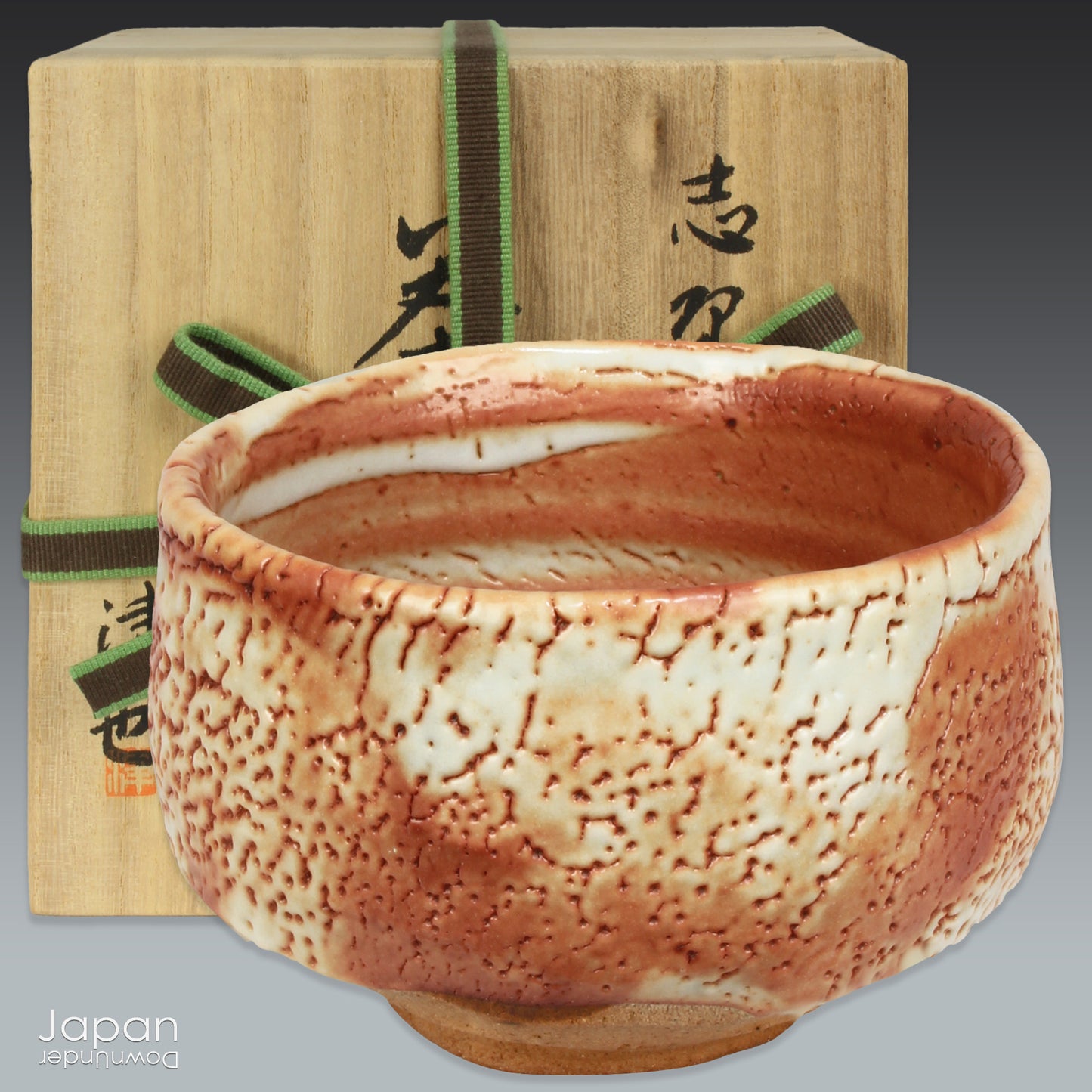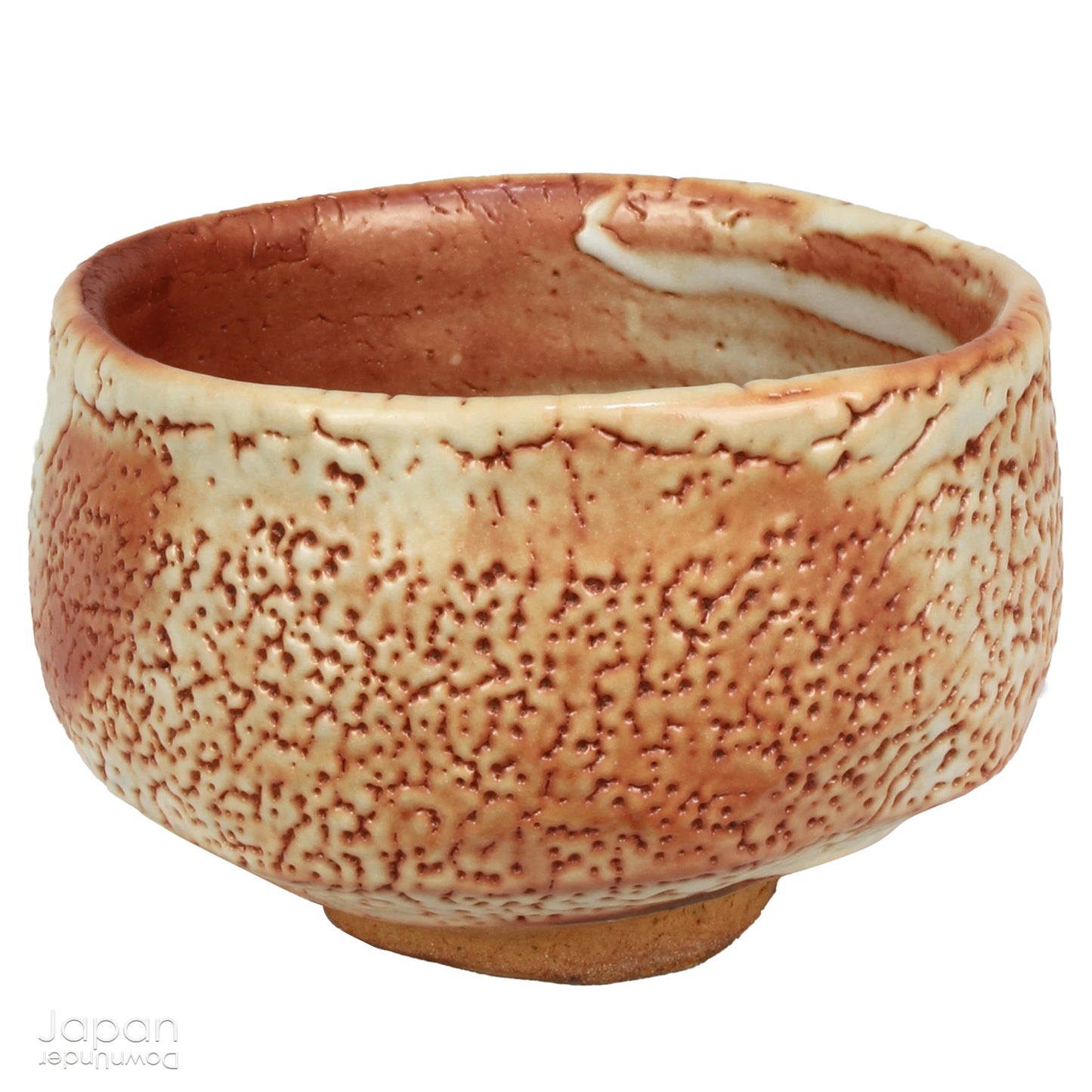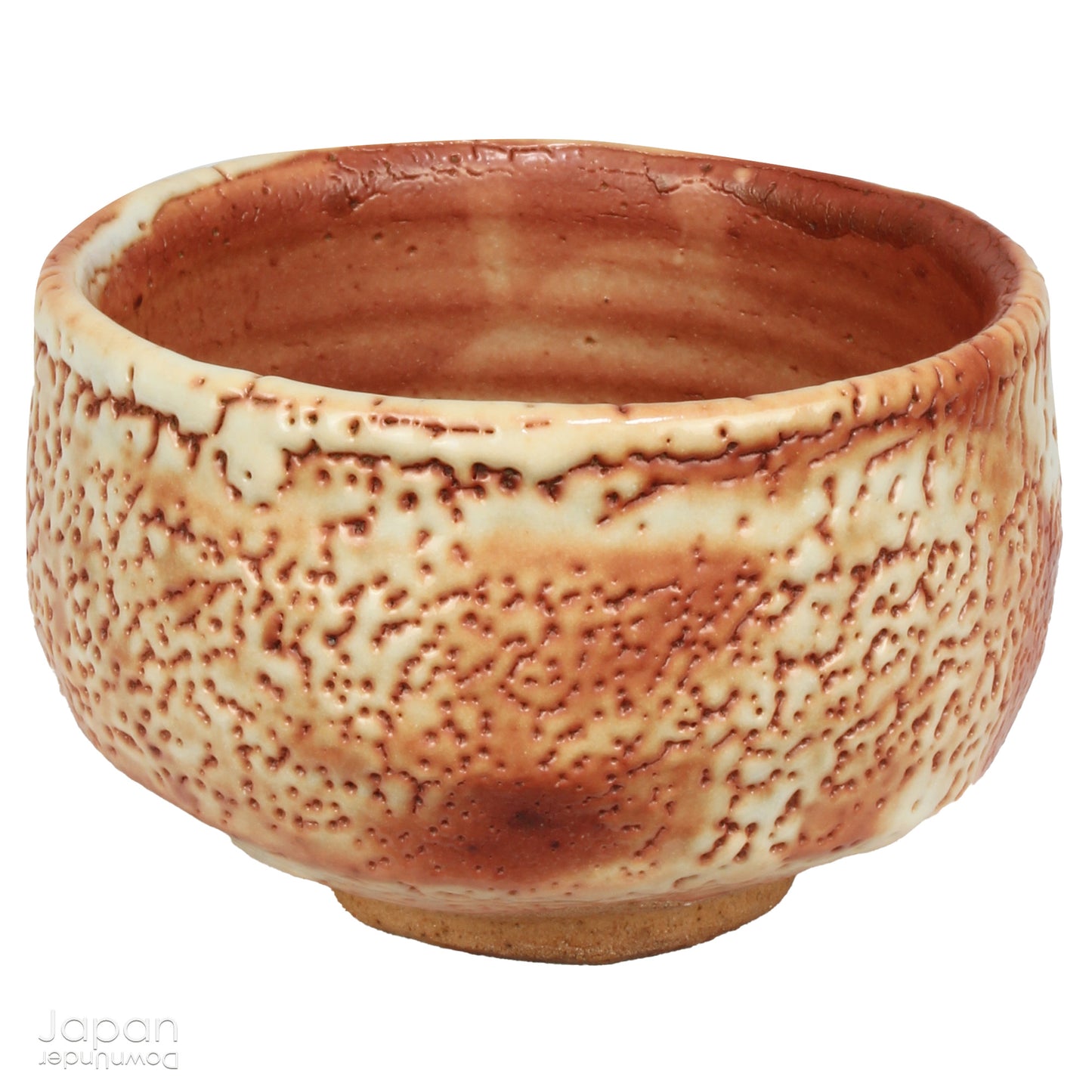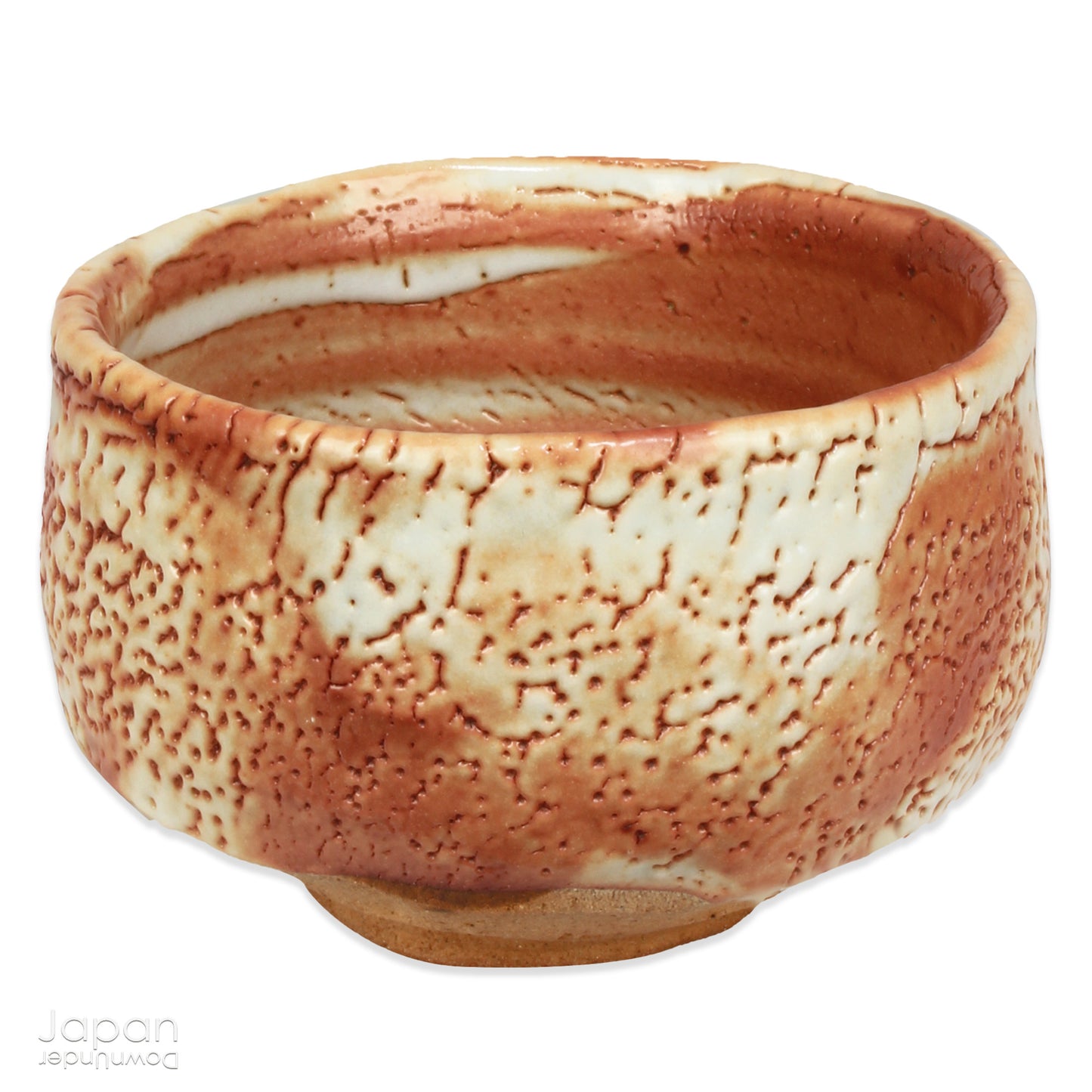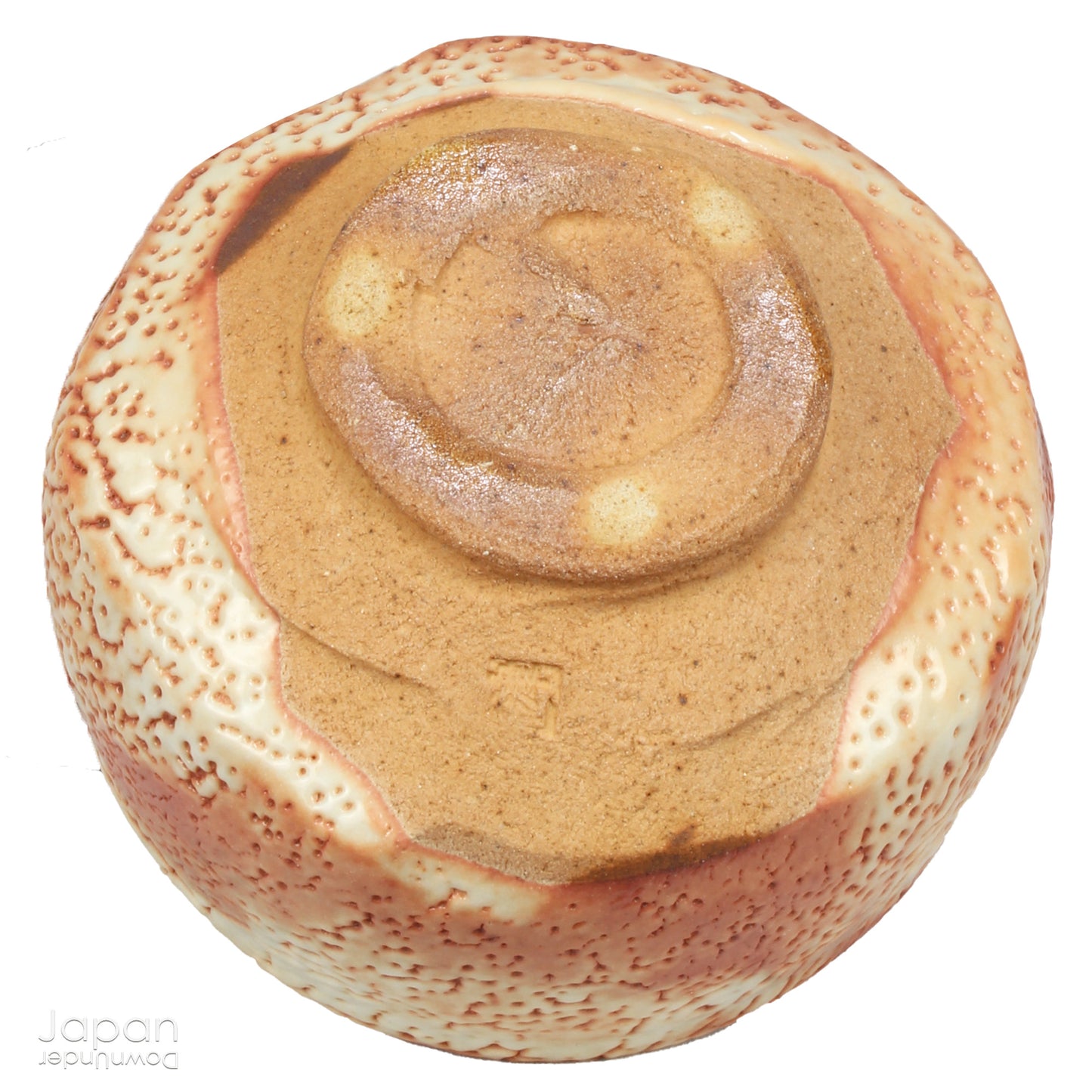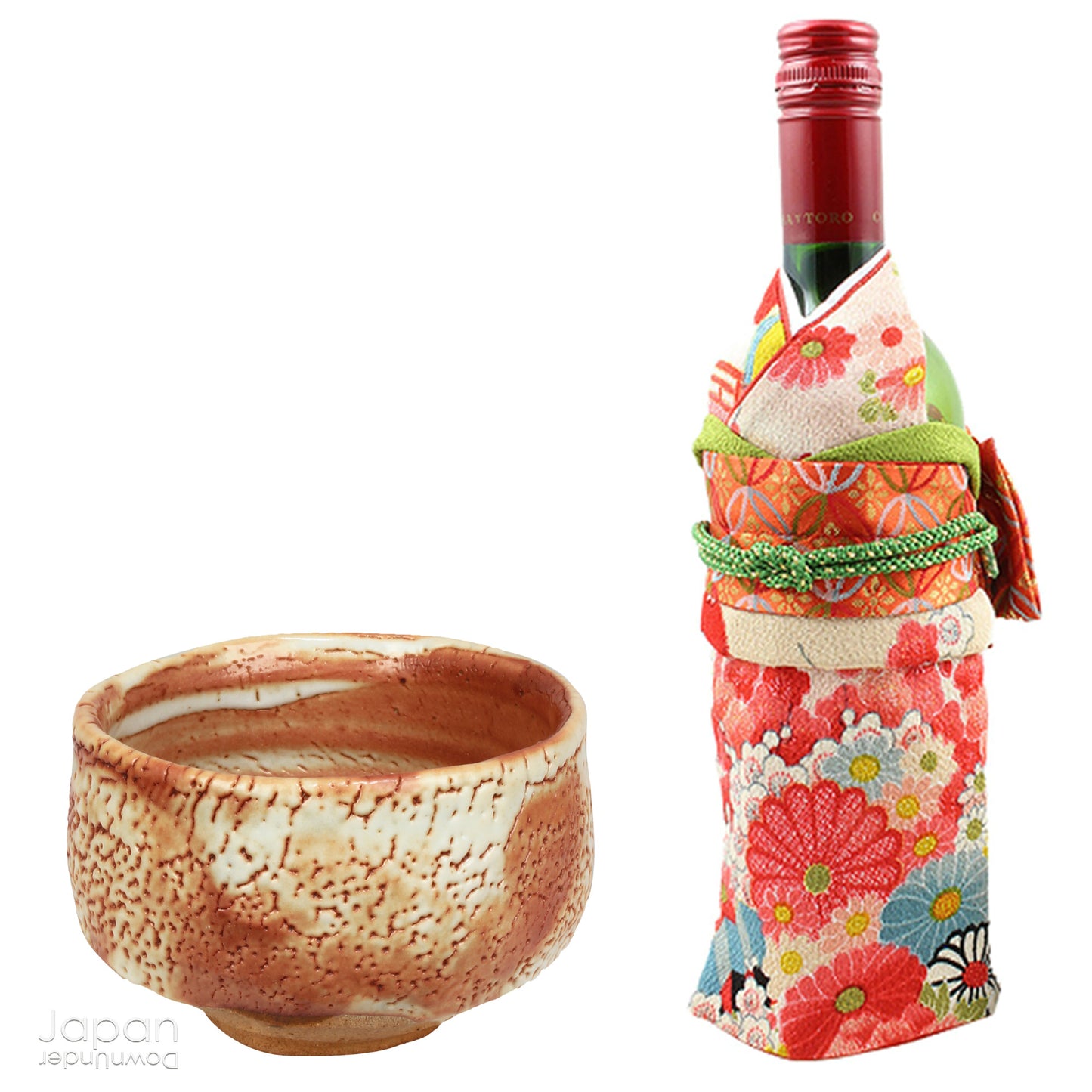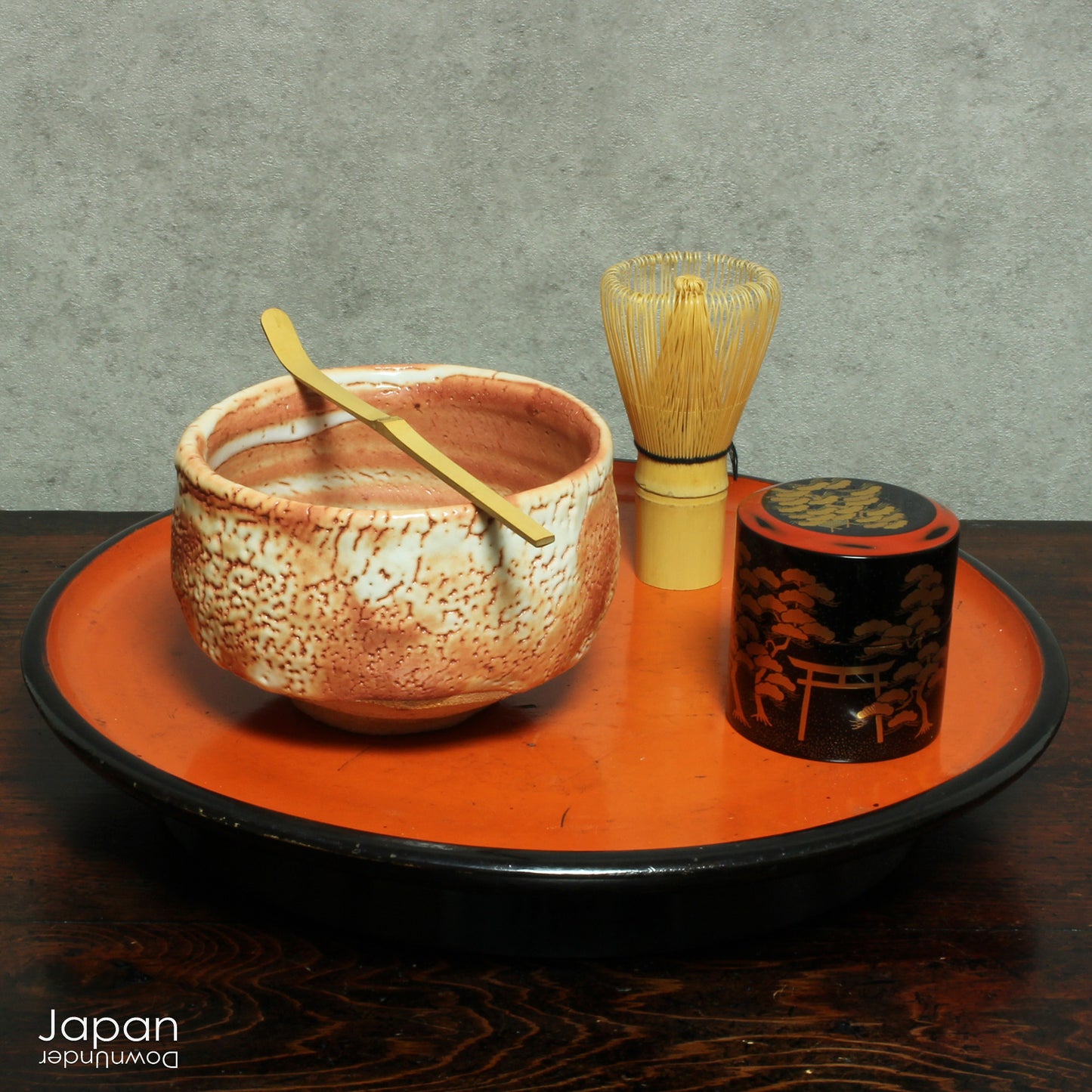JapanDownUnder
elegant shino ware matcha tea bowl - classic pale orange with white markings
elegant shino ware matcha tea bowl - classic pale orange with white markings
Couldn't load pickup availability
Love Japanese Style Like We Do
Elevate your tea ceremony with this stunning vintage matcha tea bowl, a piece that blends timeless beauty and exceptional craftsmanship. This one-of-a-kind bowl, with its delicate fusion of pale orange and white markings, is the perfect addition to your collection, allowing you to sip your matcha in style.
A Shino ware ceramic from Gifu Prefecture, this bowl features a soft, pale orange hue, enveloped in a thick, milky white glaze that creates a unique, curdled texture with charming tiny holes. The random dark orange burnished markings add an artistic touch, enhancing its visual appeal. Inside, a soft pale orange finish awaits, offering a perfect contrast to the textured exterior.
Designed with both beauty and comfort in mind, this sturdy tea bowl has an exceptionally smooth, soft feel that rests gently in your hands. Gracefully indented ridges, offer a perfect contour for cupping. The scalloped lip provides a delicate touch, making each sip a moment to savor.
The bowl is signed with the artist’s seal, Tsuya, on the base, and it comes housed in its original wooden storage box, with the artist's name inscribed on the lid. In very good vintage condition, it boasts no cracks or chips, preserving its enduring charm.
With use, this handmade bowl only grows more beautiful, as the oils from your hands and the vibrant green of matcha gradually deepen its color and enhance its luster. The Japanese believe that the more a tea bowl is used, the more it develops a unique character and story, much like the people who drink from it.
Enjoy the ritual of matcha with this lovely chawan, a true reflection of the maker's artistry and the spirit of tea itself. Let it become a cherished companion in your tea practice, rich in both history and personal connection.
- tea bowl measures 8.5 cm (3.3”) tall x 13 cm (5.1”) in diameter.
- weighs with box 1,000 gm.
(listing for boxed tea bowl only)
SHIPPING INFORMATION
- please read our shipping notes in shipping policy.
- we use recycle packaging and wrap for safety, rather than appearance.
ABOUT OUR VINTAGE, ANTIQUE AND OTHER ITEMS
We list pieces we feel are worthy of display. There may be scratches, dents, fading and signs of wear and tear. We try to explain the condition of each item exactly, but may miss something.
Information regarding the item and it’s age is obtained from dealers and our personal research. We do our best to give you the correct information but please be aware that we cannot guarantee this information.
Please message us prior to purchase with any questions you may have about our products.
SHINO YAKI WARE
Shino-yaki is one of the most loved varieties of ceramics, both for the table and the tearoom. Named for its Shino glaze, which ranges from snowy white to deep cream and on to grey and even orange. It often has a thick, curdled texture with small holes. Shino-yaki is certainly distinctive in its zen-like simplicity.
Shino yaki was Japan’s first white glaze, and is made of ground feldspar mixed with clay. Where the glaze is thin, the feldspar sometimes stains the clay either deep brown, called okoge (scorch) or bright red, called hi-e (fire marks). These accidental marks, so beautiful, yet unpredictable, are loved by connoisseurs of tea.
Shino first appeared in the Momoyama era (1568-1600) but the glaze fell out of favor in the early 18th century when green and brown Oribe glazes became popular. In the 19th century, there was a brief resurgence, after which it disappeared until the 20th century.
When Shino glazes cover drawings painted in iron oxide, they appear and disappear under the varying thickness of the glaze, creating an eye catching effect. These are known as e-Shino (picture Shino).
When drawings are etched into a layer of iron oxide which is then covered in Shino glaze, the result is a grey field with light drawings. This is known as nezumi (mouse) Shino.
Shino ware is popular today, and the glaze covers tea bowls, rice bowls, and a multitude of Japanese tableware. Modern potters using Shino glazes often intentionally exaggerate glaze imperfections to cause glaze skips and holes, which heighten the effect of the red marks, so the overall color looks orange.
CHAWAN
The chawan is a bowl used for preparing and drinking tea, and originated in China. The earliest chawan in Japan were imported from China between the 13th and the 16th centuries. Until the 15th century in Japan, tea was drunk mainly from a variety of Chinese tea bowls which the Japanese called ‘Tenmoku Chawan.’ This type of Chinese chawan was the preferred tea bowl for the Japanese tea ceremony until the 16th century. The Japanese term ‘tenmoku’ is derived from the name of the Tianmu Mountain, where Japanese priests visited Chinese temples and acquired these tea bowls to bring back to Japan.
By the end of the Kamakura period (1185–1333), as the custom of tea drinking spread throughout Japan and the Tenmoku chawan became desired by all ranks of society, the Japanese began to make their own copies in Seto (Aichi Prefecture). The Japanese particularly liked the bowls with a tapered shape, so most Seto-made Tenmoku chawan had this shape.
With the rise of the wabi tea ceremony in the late Muromachi period (1336–1573), the Ido chawan, kinds of Korean bowls mainly used for rice, also became highly prized in Japan. Korean bowls were a favourite of tea master Sen no Rikyū because of their rough simplicity.
Over time and with the development of the Japanese tea ceremony as a distinct form, local ceramics became more highly prized and developed. Around the Edo period, the chawan was mostly made in Japan.
The connection between ceramics and tea-drinking has a rich, culture. The qualities of handmade ceramic vessels have much in common with the virtues revered by the Japanese tea ceremony. Developing into a true art form, the ceramics and the simple act of tea drinking became symbolic in Japan of an appreciation of nature, simplicity and imperfection, and later as a higher art, advocating harmony and balance.
Tea bowls are never perfectly round, for they must fit the hands comfortably. A chawan is somewhat like a person. It has its own character and given time its own stories to tell. The bowl’s spirit comes from its maker and the people who have held it and enjoyed drinking tea from it.
Share
